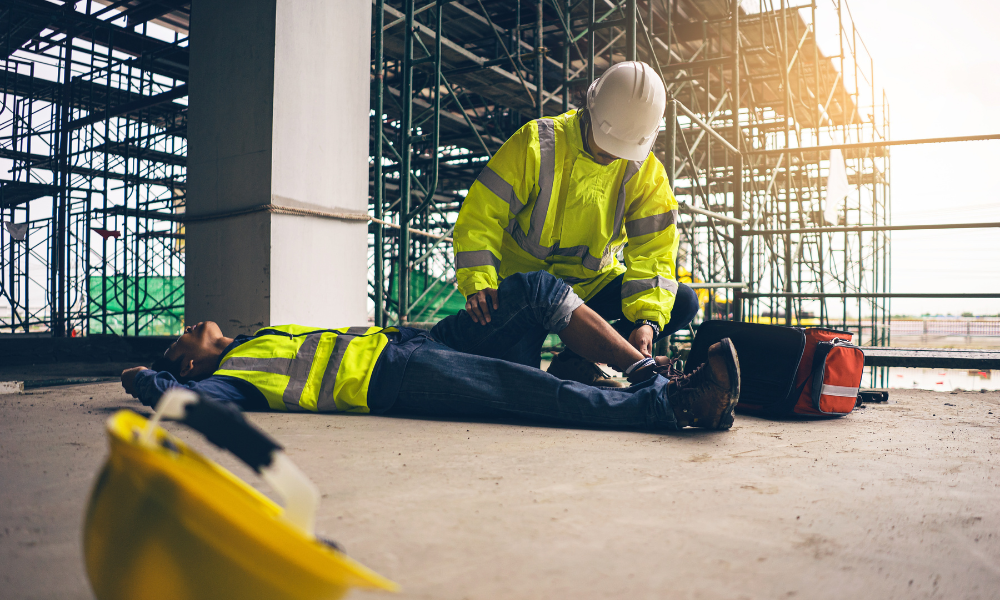In high-risk work environments — such as construction sites, remote job locations, manufacturing facilities, or utility services — ensuring worker safety is a non-negotiable priority. One of the most critical tools in today’s safety arsenal is the man down alarm device.
These devices detect when a worker falls, becomes unconscious, or is otherwise incapacitated, and then automatically alert designated personnel or emergency responders. Whether you’re a safety manager, an employer responsible for lone workers, or someone working in hazardous conditions, knowing what to look for in a reliable man down alarm device is essential.
In this guide, we’ll break down exactly what makes a man down alarm device trustworthy, effective, and lifesaving.
What Is a Man Down Alarm Device?
A man down alarm device is a wearable or portable safety tool that automatically detects when a person is motionless, has fallen, or is in a horizontal position for an unusual amount of time. Once such a condition is detected, the device sends an alert to designated contacts — typically supervisors, emergency services, or control rooms — so that help can be dispatched quickly.
They are often used in industries where:
- Workers operate alone or in isolated environments
- Physical labor increases the risk of injury or collapse
- There is a risk of sudden medical emergencies (heart attacks, seizures, etc.)
- Time is critical when a person goes down undetected
Why Reliable Man Down Alarms Matter
The very nature of man down alarms means there is no room for error. An unreliable device could lead to:
- Delayed emergency response
- Unnoticed injuries or medical events
- Increased risk of fatality in lone worker scenarios
- Non-compliance with safety regulations
- Potential legal consequences for employers
That’s why reliability isn’t just a desirable feature — it’s a requirement.
Key Features to Look for in a Reliable Man Down Alarm Device
Let’s explore the essential features that define a dependable and effective man down alarm device:
1. Automatic Fall and No-Movement Detection
A true man down device must automatically recognize when the wearer:
- Has fallen from a standing position
- Remains motionless for a specific period
- Is lying horizontally without signs of activity
These indicators are critical in identifying if a worker has lost consciousness or mobility. The best devices use accelerometers and gyroscopic sensors to detect these changes accurately, minimizing false alarms.
2. Real-Time Alerts and Notifications
Once a fall or inactivity is detected, the device should:
- Immediately alert emergency contacts
- Send GPS location data (if available)
- Use multiple communication methods: SMS, app notifications, emails, or direct calls
Some devices also send alerts to cloud-based safety dashboards or control rooms, ensuring that someone is always notified promptly.
3. Built-In GPS and Location Tracking
For lone or mobile workers, location is everything. A reliable man down device should include:
- Accurate GPS tracking
- Real-time location updates
- Geo-fencing capabilities (alerts when leaving or entering a specific area)
- Offline location logging (to sync data later if GPS signal is lost)
This is crucial for fast emergency response, especially in large industrial sites or remote areas.
4. Reliable Network Connectivity
The best man down alarm devices offer multi-network support to maximize uptime, including:
- Cellular (4G/5G or GSM)
- Wi-Fi
- Bluetooth (for proximity-based safety solutions)
- Satellite connectivity for off-grid use
Many enterprise-grade solutions offer dual SIM or global roaming, ensuring the device stays connected no matter where the worker is.
5. Manual SOS Button
In addition to automatic fall detection, a manual panic button (SOS) is a must. If the worker is in danger but conscious, they should be able to press a button to immediately trigger an emergency alert.
Look for:
- Easy-to-reach buttons
- Haptic/vibration confirmation when pressed
- Silent alarm option in hostile situations (e.g., for security workers)
6. Long Battery Life and Power Alerts
A device is only as useful as its uptime. Seek models that offer:
- Long battery life (8+ hours minimum, ideally days)
- Low battery notifications sent to both the wearer and supervisors
- Rechargeable or swappable batteries
- Energy-efficient power management systems
Devices used in remote areas or long shifts must not run out of battery when they’re needed most.
7. Rugged and Durable Design
Man down alarm devices should be built for tough conditions. Key features to look for include:
- Shock-proof casing
- Water resistance or waterproofing (IP67/IP68 ratings)
- Dust resistance
- Extreme temperature tolerance
These features are vital in environments like oil rigs, construction sites, and manufacturing plants.
8. Easy Integration with Safety Systems
For large organizations or safety-conscious employers, the device should be able to:
- Integrate with incident reporting software
- Connect to worker management systems
- Sync with cloud platforms for data storage and analysis
- Offer APIs for custom integrations
This ensures that the device doesn’t work in isolation, but becomes part of a connected safety ecosystem.
9. User-Friendly Interface
The most advanced device is useless if workers don’t use it correctly. Look for:
- Simple setup process
- Intuitive user interface
- Clear visual and audio feedback
- Minimal training requirements
Some devices even offer voice prompts, color-coded alerts, and mobile apps for managing settings.
10. Regulatory Compliance and Certifications
In many regions, employers are legally required to protect lone workers. A compliant man down alarm device helps you:
- Meet safety regulations and legal standards
- Avoid penalties and legal exposure
- Provide documented safety coverage for audits
Check for certifications like:
- ATEX (for explosive environments)
- IECEx, ISO 45001, or EN 50518
- FCC, CE, or other regional telecom approvals
Optional but Valuable Features
While not mandatory, these additional features can enhance safety:
- Two-way voice communication (like a walkie-talkie)
- Fall severity analysis (to prioritize response)
- Integration with wearable biometrics (e.g., heart rate, temperature)
- Check-in timers and escalation protocols
- Remote configuration and firmware updates
Who Needs a Man Down Alarm Device?
Common Industries That Use These Devices
- Construction
- Mining and extraction
- Energy and utilities
- Oil and gas
- Warehousing and logistics
- Healthcare (especially for at-risk individuals)
- Security and night patrol services
- Agriculture and fieldwork
- Telecommunication tower maintenance
Lone Workers and Remote Employees
A lone worker is anyone working without direct supervision or out of line-of-sight from others. These individuals are especially vulnerable in emergencies — which is where man down alarms become lifesaving.
Conclusion
In the world of workplace safety, there’s no room for second chances. A reliable man down alarm device is more than a piece of technology — it’s a lifeline.
When selecting one, prioritize automatic detection, real-time alerts, ruggedness, and ease of use. Whether you’re protecting one worker or an entire workforce, the right device can make the difference between a close call and a tragic outcome.



